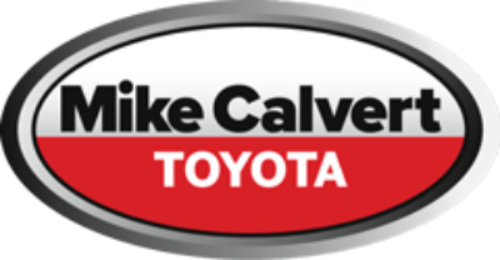At Mike Calvert Toyota Collision Center, we know an accident is stressful enough. You shouldn’t have to worry about whether your vehicle will be repaired with the right parts. Choosing the right insurance company and coverage plan plays a significant role in ensuring your car receives the repairs it truly needs.
One of the most important factors? Coverage for Original Equipment (OE) parts. Let’s explore why this matters, along with other key considerations that can make the difference between a quick patch-up and a safe, lasting repair.
Why OE Parts Coverage Should Be Non-Negotiable
Not all insurance policies treat replacement parts the same. Some may only pay for aftermarket parts, cheaper, non-original components that can compromise fit, performance, and safety.
When you have OE parts coverage, your repairs are done with the same parts your vehicle was built with, parts engineered to factory specifications. At Mike Calvert, this isn’t just a preference, it’s a standard. We know OE parts deliver the right fit, the right performance, and long-term peace of mind.
The Difference Between OEM, Aftermarket, and Recycled Parts
In insurance and collision repair, the biggest cost and quality differences often come down to the type of replacement parts used. Here’s how they compare:
- OEM (Original Equipment Manufacturer) Parts: These are made by the same manufacturer that built the parts for your vehicle when it was new. They’re designed to meet the exact specifications of your car’s make and model, ensuring proper fit, finish, and performance. OEM parts are typically preferred for maintaining safety, value, and warranty compliance.
- Aftermarket Parts: These are produced by companies other than the original manufacturer. Quality can vary widely; some are built to similar standards as OEM, while others may not match the precise fit, materials, or durability. They’re usually less expensive but can lead to more time in fitting or adjustments during repairs.
- Recycled (or Salvage) Parts: These come from previously owned vehicles that have been dismantled. They may be genuine OEM parts, but they’re used, and their condition depends on the donor vehicle’s history. While they can be cost-effective and environmentally friendly, they may have wear, cosmetic imperfections, or unknown stress from prior use.
In insurance policy terms, the type of part allowed—OEM, aftermarket, or recycled—can greatly impact the quality and longevity of the repair, the appearance of the vehicle, and even its resale value. Whenever possible, we recommend OEM parts to ensure your vehicle is restored to its pre-accident condition.
Choose a Repair Shop That’s Certified
Some insurance companies steer customers toward big-box repair networks that prioritize cost savings over quality. These shops often use aftermarket parts or follow generalized repair methods.
At Mike Calvert Toyota Collision Center, we’re Toyota-certified. Our technicians receive factory-level training, use manufacturer-approved repair procedures, and work with specialized equipment designed for your exact make and model. This ensures every repair is done right, the first time.
Make Sure Your Insurance Supports Supplement Claims
Even the most thorough inspection can uncover hidden damage once repairs begin, especially in modern vehicles loaded with sensors, electronics, and safety features. This is where supplement claims come in.
A good insurance policy should cover additional repairs discovered after the initial estimate. We carefully document and communicate any supplemental needs so your insurer can approve them without delay, ensuring your car is truly restored to pre-accident condition.
Look for Transparency and Ease in the Claims Process
When an insurer communicates clearly, approves OE parts, and respects your choice of repair facility, your repair experience is much smoother. At Mike Calvert, we help our customers navigate the process with:
- Digital estimates and updates
- Rental car coordination
- Shuttle service
- Direct communication with your insurance adjuster
The right insurer will work with us—not against us—to get you back on the road without unnecessary delays or compromises.
Protect Your Warranty and Resale Value
Repairs done with OE parts at a certified facility can help maintain your manufacturer’s warranty and protect your vehicle’s resale value. Aftermarket parts may void portions of your warranty and could hurt trade-in value down the road.
By choosing an insurance policy that supports OE repairs, you’re protecting more than just your immediate safety—you’re safeguarding your vehicle’s future.
What to Look For When Reviewing Coverage
When evaluating your insurance policy, ask:
- Does it cover OE parts for my vehicle’s brand?
- Does it allow me to choose a certified repair facility?
- Does it support supplemental repairs without unnecessary pushback?
- Will it work with my shop to streamline the process?
If the answer to any of these is “no,” it may be time to consider different coverage.
Mike Calvert Collision Center: Your Partner in Quality Repairs
From our state-of-the-art facility, equipped with computerized frame measuring systems, precision paint booths, and factory-approved tools, to our commitment to using OE parts only, every repair at Mike Calvert is done with your safety and satisfaction in mind.
We don’t cut corners, and we don’t settle for “close enough.” That’s why we encourage our customers to choose insurance coverage that aligns with our high standards—so we can return your vehicle to you exactly as it was before the accident.
Final Word
Your choice of insurance isn’t just about saving on premiums—it’s about ensuring your vehicle is repaired to the highest standard after an accident. OE parts coverage, certified repair facilities, and a cooperative claims process are essential for getting you back on the road safely, with your car’s value and performance intact.
When your coverage and your collision center are working toward the same goal, quality, you win every time.



